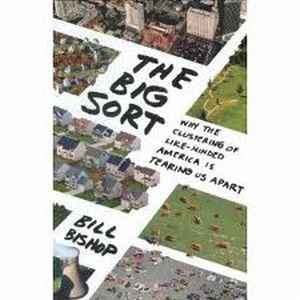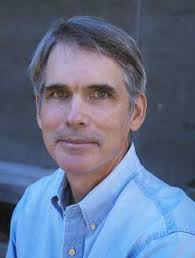'Image Tribes' Affinities Sorting Us Into Perpetual Conflict, Author Claims
July 4, 2011
Leave a Comment
|
||||||||||
| Printer Friendly Story View |

"The Big Sort" Why The Clustering of Like-Minded America is Tearing Us Apart,"

Journalist Bill Bishop
Every now and then an intellectual insight cuts through the confusing morass of opinion and tells us exactly why conflict plagues this nation.
Of course the cross-currents that affect the nation also wash over states and local communities. We see that here in Michigan and in the Bay-Saginaw area that struggles to regain economic viability while Midland appears more stable.
The problem with recognizing a keen insight about national and local social dysfunction is, however, that there is seldom a clear-cut remedy.
The insight presented by a fairly new book, "The Big Sort" Why The Clustering of Like-Minded America is Tearing Us Apart," is described by the publisher, Houghton Mifflin, as "the landmark story of how America came to be a country of swelling cultural division, economic separation, and political polarization."
Journalist Bill Bishop (in collaboration with sociologist and statistician Robert Cushing) analyzes demographical data to show how Americans have sorted themselves geographically, economically, and politically into like-minded communities over three decades.
Homogeneity breeds economic inequality, cultural misunderstanding, political extremism, and legislative gridlock, the publishers state, asserting: "This is the story of our times, and its reality poses a profound threat to democracy, but no one before now has seemed to notice, let alone been able to describe, its causes and consequences.
"People with college degrees were relatively evenly spread across the nation's cities in 1970. Thirty years later, college graduates had congregated in particular cities, a phenomenon that decimated the economies in some places and caused other regions to flourish."
Religion, as always, is part of the divide. The generation of ministers who built sprawling mega-churches in the new suburbs learned to attract their stadium-sized congregations through the "homogeneous unit principle." The new churches were designed for cookie-cutter parishioners, what one church-growth proponent described as "people like us."
Analysis of voting trends in the book is most convincing. In 1976, only about a quarter of America's voters lived in a county a presidential candidate won by a landslide margin. By 2004, it was nearly half. That fact alone is a startling change.
The author notes that businesses learned to target their marketing to like-minded "image tribes," a technique used by Republicans in the 2004 campaign.
The following is an eye-opening insight: "Living in politically like-minded groups has had its consequences. People living in homogeneous communities grow both more extreme and more certain in their beliefs. Locally, therefore, governments backed by large majorities are tackling every conceivable issue. Nationally, however, Congress has lost most of its moderate members and is mired in conflict."
Like Robert Putnam's "Bowling Alone," Richard Florida's "The Rise of the Creative Class," and Thomas Frank's "What's the Matter with Kansas?," "The Big Sort" explores the connection between cultural evolution, economic change, and the power of place.
"This book, however, is the first account that systematically ties cultural and economic evolution to the changing political landscape of America," according to the publishers.
We are like rats in a maze, responding to the next piece of cheese dangled by the political and marketing puppeteers.
The pregnant question remains: what do we do to maintain our national and local equilibrium?
| Printer Friendly Story View |
|
|

Dave Rogers |
|
|
|
Printer-Friendly Story View
0200 Nd: 04-15-2024 d 4 cpr 0
12/31/2020 P3v3-0200-Ad.cfm
SPONSORED LINKS
12/31/2020 drop ads P3v3-0200-Ad.cfm


